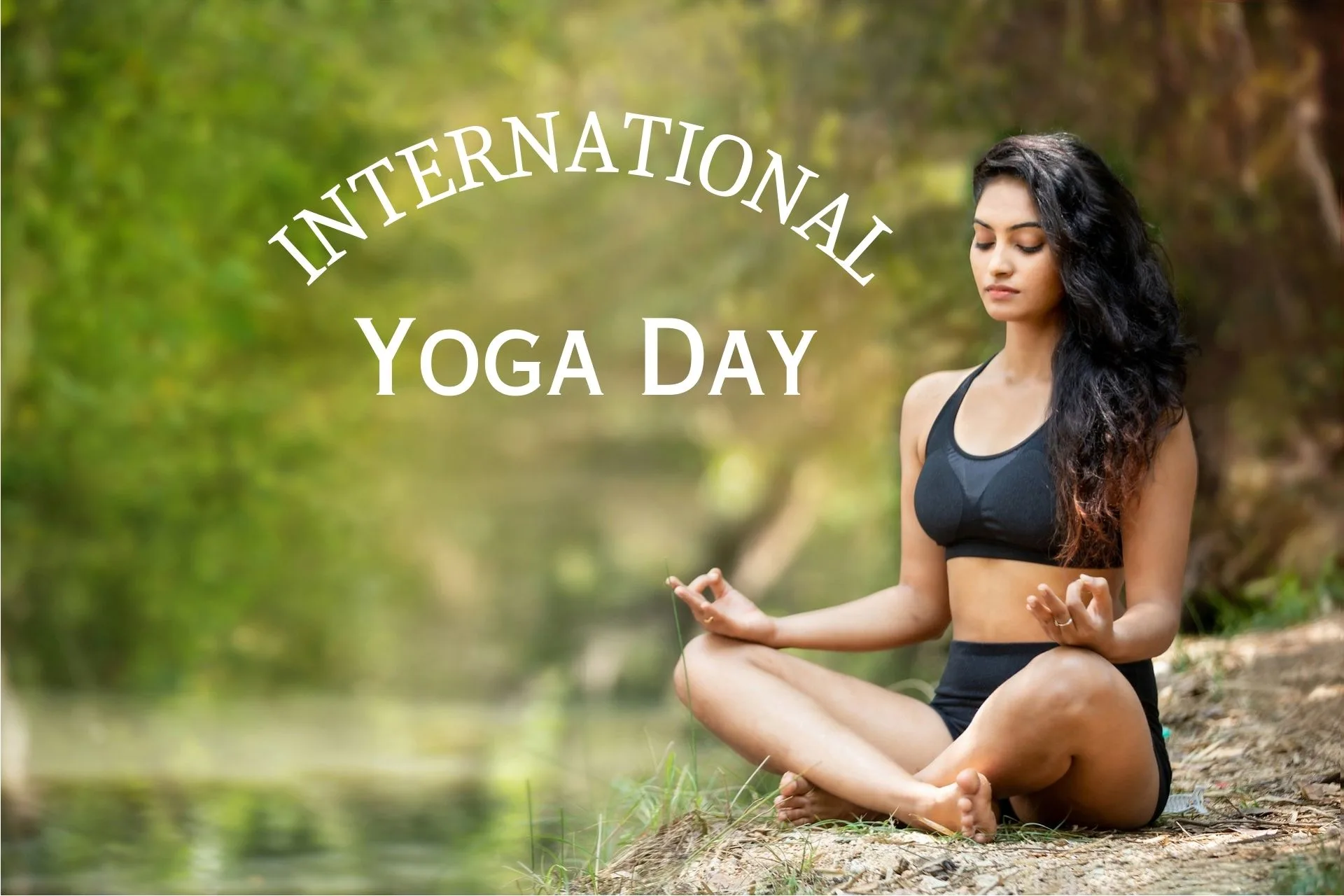
Introduction: Celebrating World Yoga Day
On the 21st of June each year, people around the globe come together to celebrate World Yoga Day, also known as International Day of Yoga. This auspicious occasion aims to promote the ancient practice of yoga and raise awareness about its numerous physical, mental, and spiritual benefits. With its roots deeply embedded in Indian philosophy, yoga has transcended cultural boundaries and has become a beloved discipline embraced by millions worldwide.
Table of Contents
The Significance of Yoga in Modern Society
In today’s fast-paced and stress-filled world, yoga has emerged as a powerful tool for holistic well-being. It offers a means to achieve physical fitness, mental clarity, emotional balance, and spiritual growth. The practice of yoga encompasses various postures (asanas), breathing exercises (pranayama), meditation techniques, and ethical principles that cultivate harmony between the body, mind, and spirit.
Exploring the Origins of Yoga day
Yoga traces its origins back thousands of years to ancient India. The term “yoga” originates from the ancient Sanskrit word “yuj,” denoting the profound essence of unity and harmonious connection. It signifies the union of the individual self with the universal consciousness, emphasizing the interconnectedness of all beings. The earliest written records of yoga can be found in the ancient texts of the Vedas and the Upanishads, which provide insights into the philosophical and spiritual aspects of this discipline.
Understanding the Philosophy behind Yoga
At its core, yoga is a philosophy that encompasses a holistic approach to life. It emphasizes self-discipline, self-awareness, and self-realization. The eightfold path of yoga, as described by the sage Patanjali in the Yoga Sutras, serves as a guiding framework for practitioners. It includes principles such as ethical conduct (yamas), self-discipline (niyamas), physical postures (asanas), breath control (pranayama), withdrawal of the senses (pratyahara), concentration (dharana), meditation (dhyana), and transcendence (samadhi).
Physical Benefits of Practicing Yoga
Regular practice of yoga offers numerous physical benefits. Yoga enhances flexibility, strength, and balance, rendering the body more robust and less susceptible to injuries. Yoga postures gently stretch and tone the muscles, promoting a lean and toned physique. Additionally, yoga enhances the functioning of the respiratory, circulatory, and digestive systems, contributing to overall vitality and well-being.
Mental and Emotional Well-being through Yoga day
Yoga not only nurtures the physical body but also cultivates mental and emotional well-being. Through the integration of breath and movement, yoga brings about a sense of calm and relaxation. It reduces stress, anxiety, and depression, while enhancing focus, concentration, and clarity of thought. Regular practice of meditation and mindfulness during yoga sessions helps individuals develop a positive mindset, manage emotions effectively, and experience inner peace.
Different Types of Yoga day Practices
The world of yoga encompasses various styles and practices, catering to diverse preferences and goals. Here are five well-liked forms of yoga:
1. Hatha Yoga
Hatha yoga is a gentle and foundational practice that focuses on physical postures and breath control. It promotes balance, flexibility, and relaxation, making it suitable for beginners and practitioners of all ages.
2. Vinyasa Yoga
Vinyasa yoga, also known as flow yoga, synchronizes breath with movement in a continuous and dynamic sequence of poses. It builds strength, endurance, and fluidity, creating a flowing meditation in motion.
3. Ashtanga Yoga
Ashtanga yoga follows a structured and vigorous sequence of poses, accompanied by specific breathing techniques. It emphasizes strength, flexibility, and stamina, offering a physically challenging practice.
4. Bikram Yoga
Bikram yoga involves a series of 26 poses and two breathing exercises performed in a heated room. The heat facilitates deeper stretching, detoxification, and increased cardiovascular endurance.
5. Kundalini Yoga
Kundalini yoga combines physical postures, breathwork, chanting, and meditation to awaken and balance the Kundalini energy, believed to reside at the base of the spine. It aims to unlock one’s full potential and tap into inner consciousness.
Steps to Start Your Yoga day Journey
Starting a yoga journey can be a rewarding and transformative adventure. Let’s commence by outlining a few fundamental actions to initiate your journey:
- Find a qualified and experienced yoga teacher or studio.
- Invest in a comfortable yoga mat and attire.
- Begin with gentle yoga classes suitable for beginners.
- Practice regularly and establish a consistent routine.
- Attune to the signals your body sends and adapt postures accordingly, ensuring optimal alignment and comfort.
- Gradually progress and explore different styles of yoga.
Incorporating Yoga into Daily Life
To reap the full benefits of yoga, it is essential to integrate its principles and practices into daily life. Discover various avenues to infuse the practice of yoga into your daily routine with the following suggestions:
- Cultivate a state of mindfulness and engage in conscious, profound breathing as you navigate through the moments of your day.
- Take short breaks for stretching and gentle movements.
- Cultivate gratitude and positive affirmations.
- Maintain a balanced and nutritious diet.
- Prioritize self-care and adequate rest.
Yoga day Retreats and Workshops: Deepening the Practice
Yoga retreats and workshops offer opportunities to immerse oneself in the yogic lifestyle and deepen the practice. These gatherings often take place in serene natural settings, providing a nurturing environment for self-reflection, learning, and growth. Retreats and workshops offer a range of activities such as intensive yoga sessions, meditation, spiritual teachings, and holistic therapies.
Yoga for Special Populations
Yoga is a versatile practice that can be adapted to accommodate various populations and specific needs. Specialized yoga classes are available for pregnant women, seniors, children, individuals with physical disabilities, and those recovering from injuries. Yoga offers a gentle and inclusive approach, providing numerous benefits tailored to each unique group.
Yoga and Mindfulness: Finding Inner Peace
Yoga and mindfulness are deeply intertwined. Mindfulness, the practice of being fully present in the moment, complements the meditative aspect of yoga. By cultivating mindfulness during yoga practice, individuals can deepen their awareness, connect with their breath, and experience profound peace and tranquility.
Yoga and its Connection to Spirituality
Yoga has a strong connection to spirituality, although it is not limited to any specific religious beliefs. Through the practice of yoga, individuals can embark on a spiritual journey, exploring their inner selves and connecting with a higher power or universal consciousness. Yoga encourages self-reflection, introspection, and the development of qualities such as compassion, gratitude, and contentment.
Yoga Accessories and Attire: Enhancing the Experience
While yoga can be practiced with minimal equipment, certain accessories and attire can enhance the overall experience. Comfortable clothing that allows freedom of movement is recommended, along with a supportive yoga mat, props such as blocks and straps, and accessories like meditation cushions and essential oils. These tools contribute to creating a nurturing and enjoyable yoga practice.
Conclusion: Embrace the Transformative Power of Yoga day
World Yoga Day stands as a poignant testament to the profound influence that yoga imparts on our holistic welfare encompassing the realms of the physical, mental, and spiritual dimensions. By embracing yoga as a way of life, we can attain greater harmony within ourselves and foster a more compassionate and peaceful world. So, let us unroll our mats, take a deep breath, and embark on this transformative journey towards self-discovery, wellness, and inner peace.
Read more about Father’s Day.
FAQs (Frequently Asked Questions)
1. Can anyone practice yoga?
Undeniably, yoga proves to be a versatile discipline that caters to individuals across diverse age groups and varying levels of physical fitness. It can be customized to cater to individual requirements and constraints.
2. How often should I practice yoga?
Consistency is key in yoga. Aim to practice at least two to three times per week to experience noticeable benefits. Notably, even dedicating a brief span of time to a daily practice of yoga can yield considerable advantages and prove advantageous to one’s overall well-being.
3. Do I need to be flexible to do yoga?
It is important to note that possessing flexibility is not a mandatory requirement for engaging in the practice of yoga. Regular practice will gradually increase flexibility and range of motion.
4. Can yoga help with stress and anxiety?
Absolutely! Yoga incorporates breathwork, meditation, and relaxation techniques that effectively reduce stress and anxiety levels.
5. Is yoga a form of exercise?
Yes, yoga is a form of exercise that improves strength, flexibility, and balance. However, it also offers a holistic approach to well-being beyond just physical fitness.




Pingback: Father's Day 2023: Celebrating and Honoring Our Beloved Dads